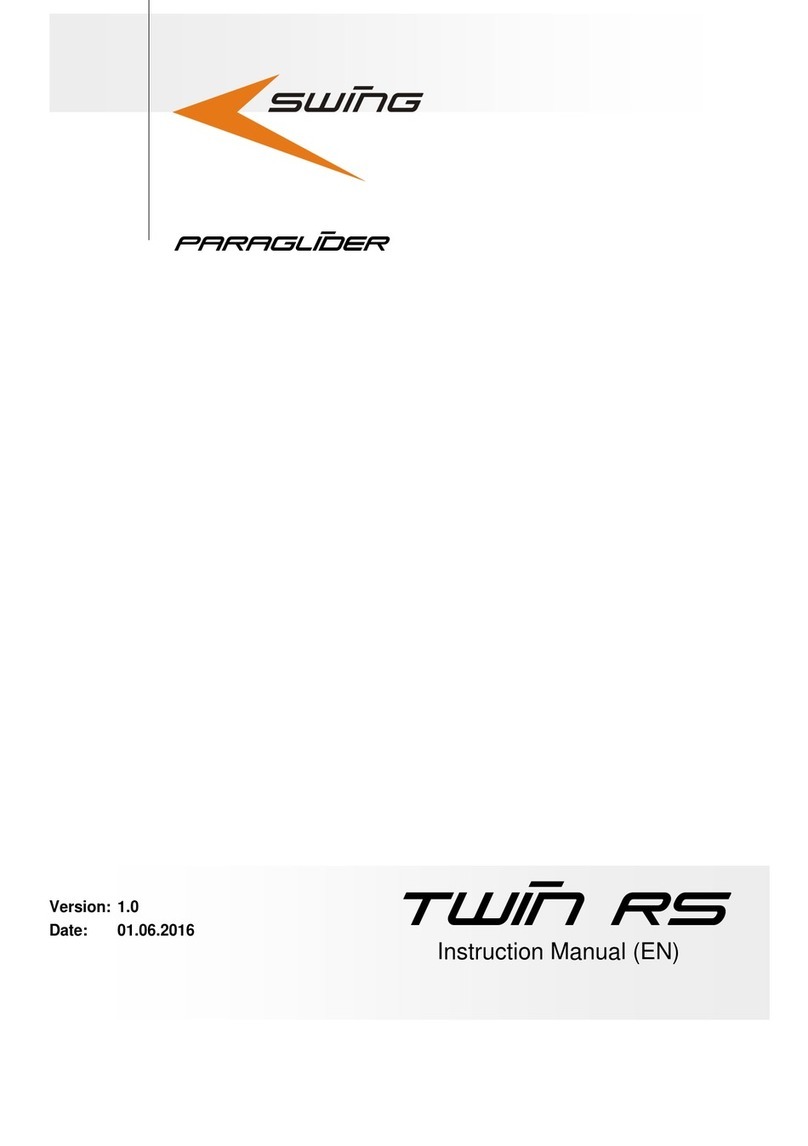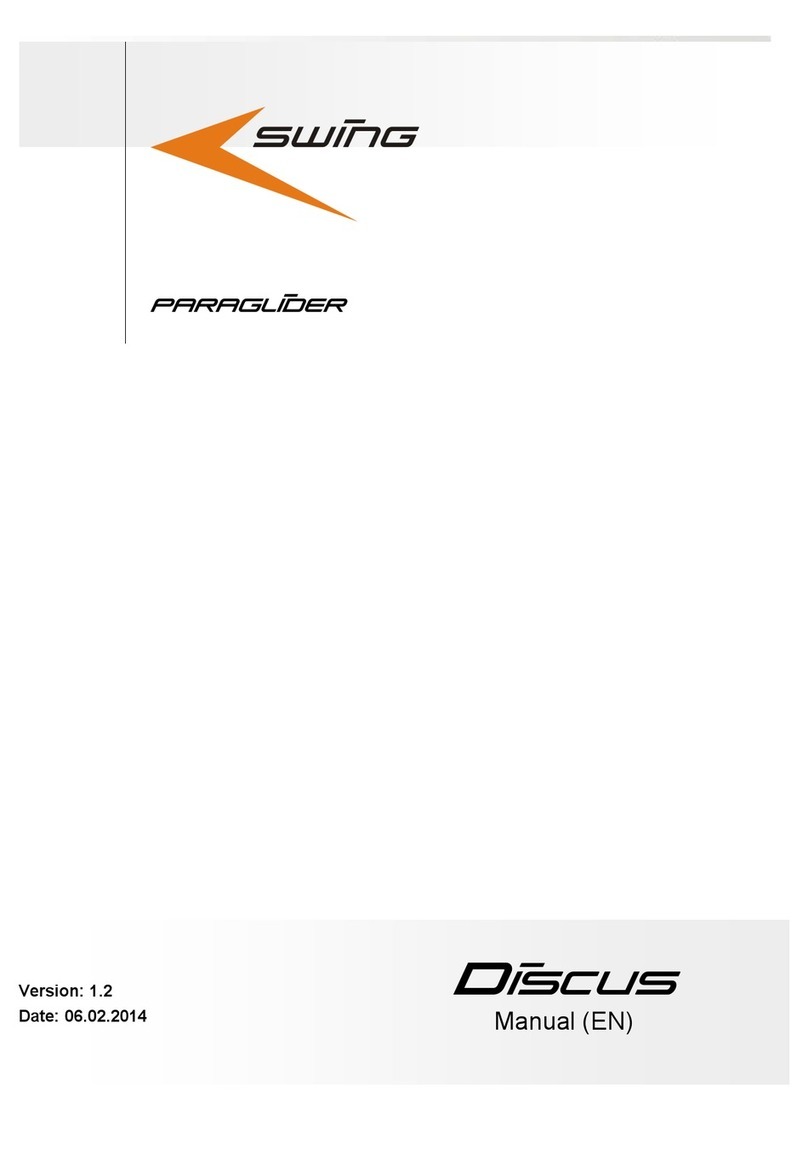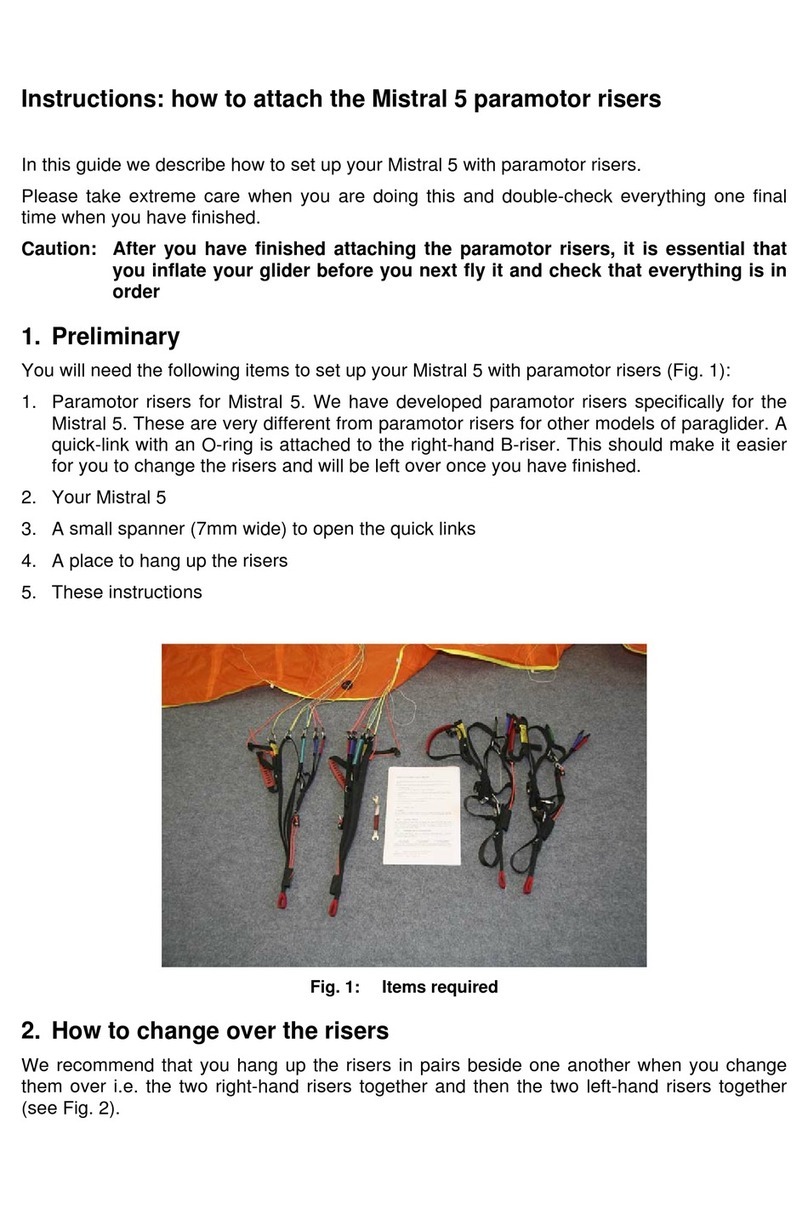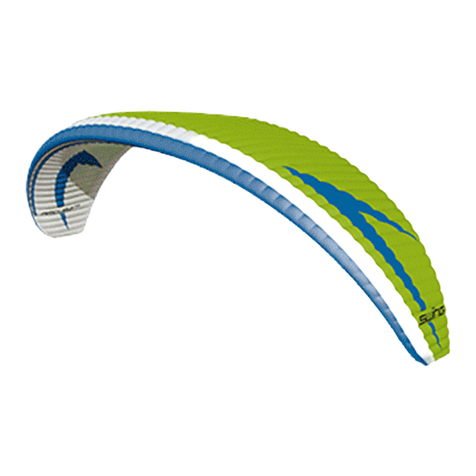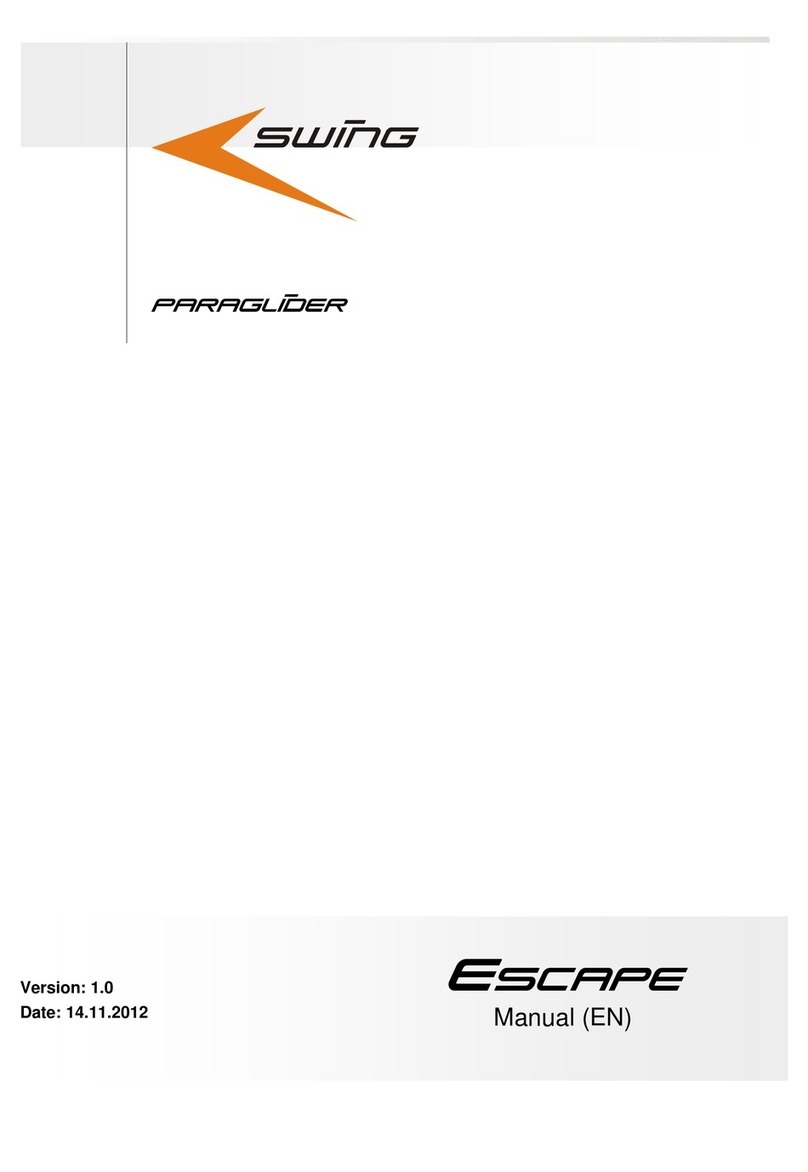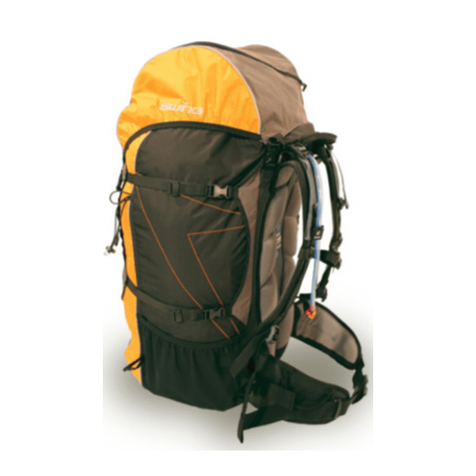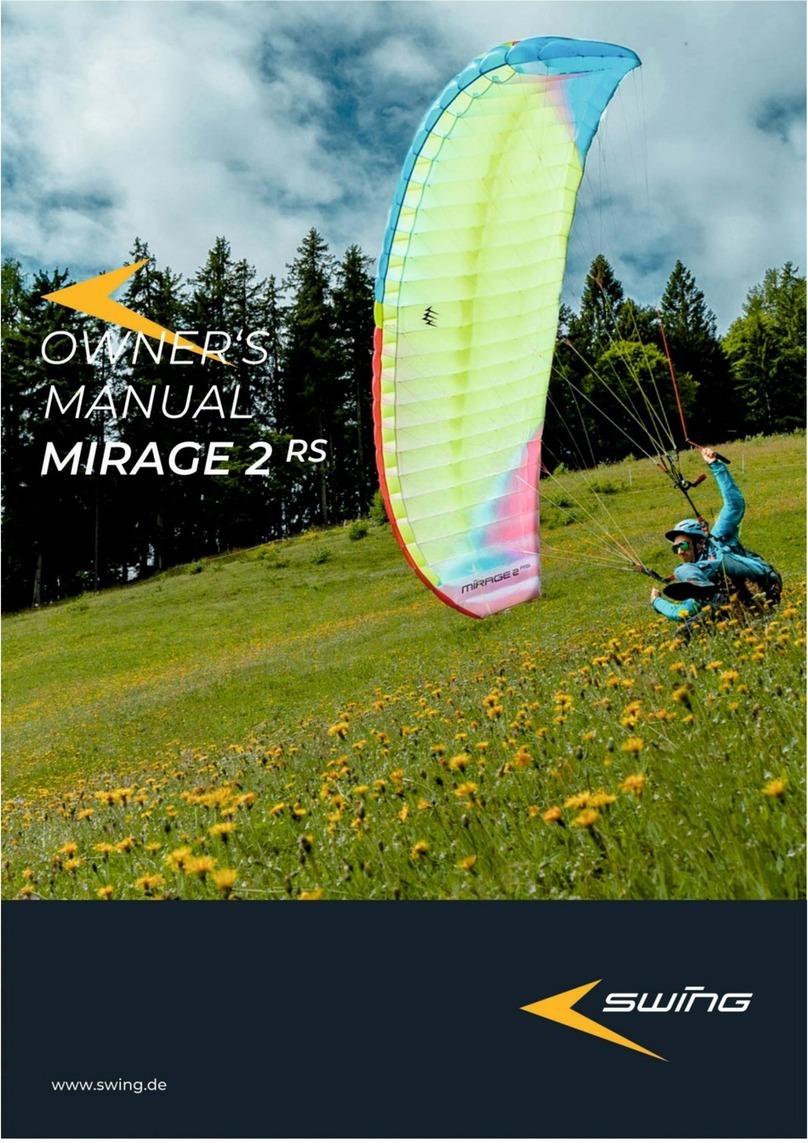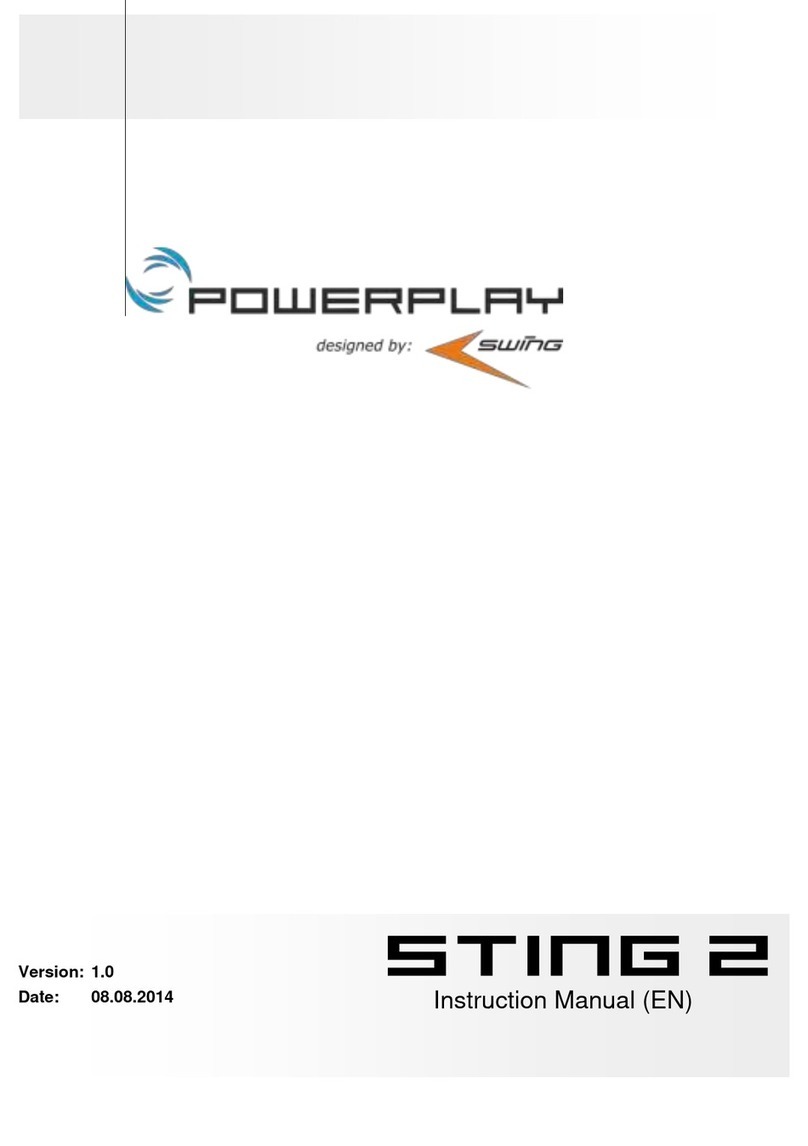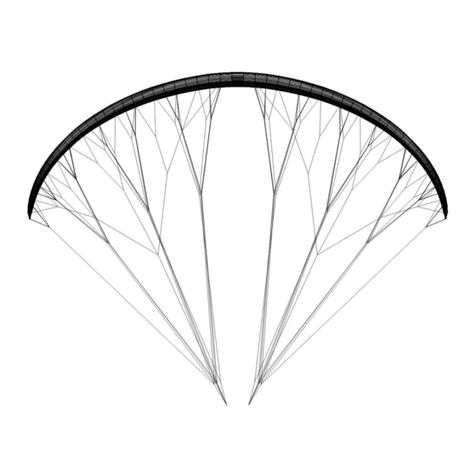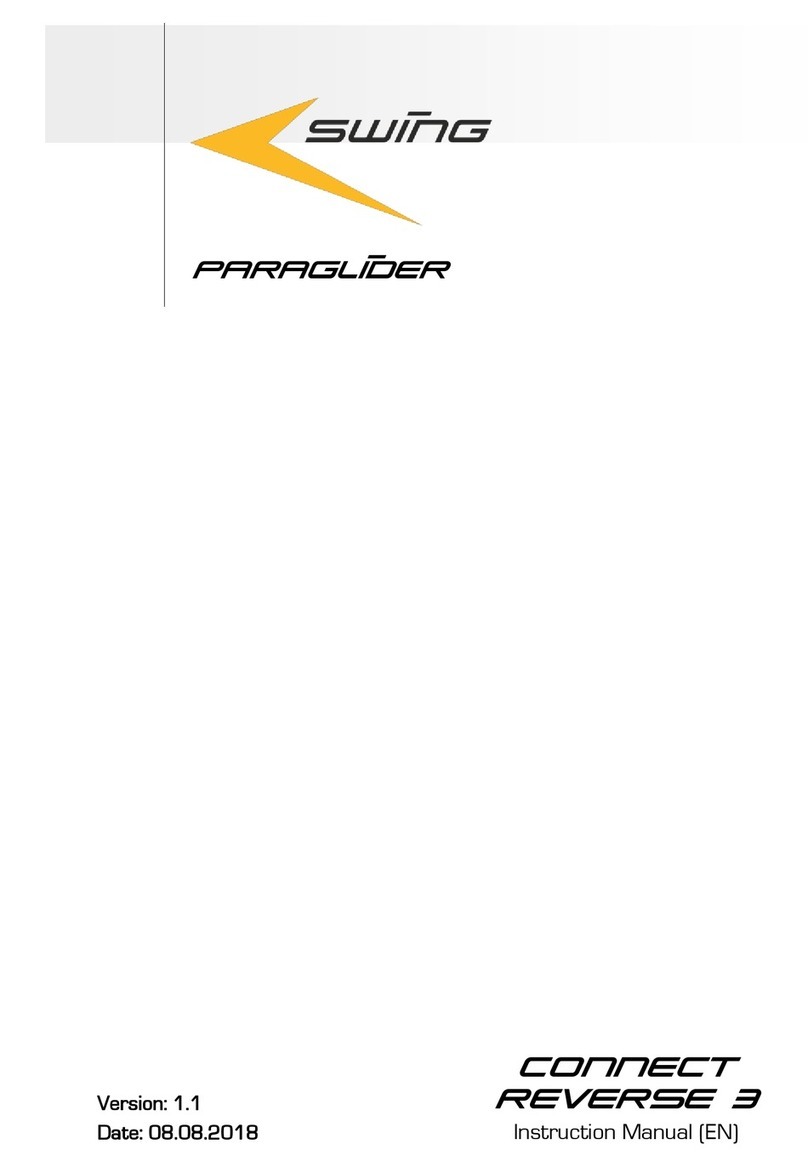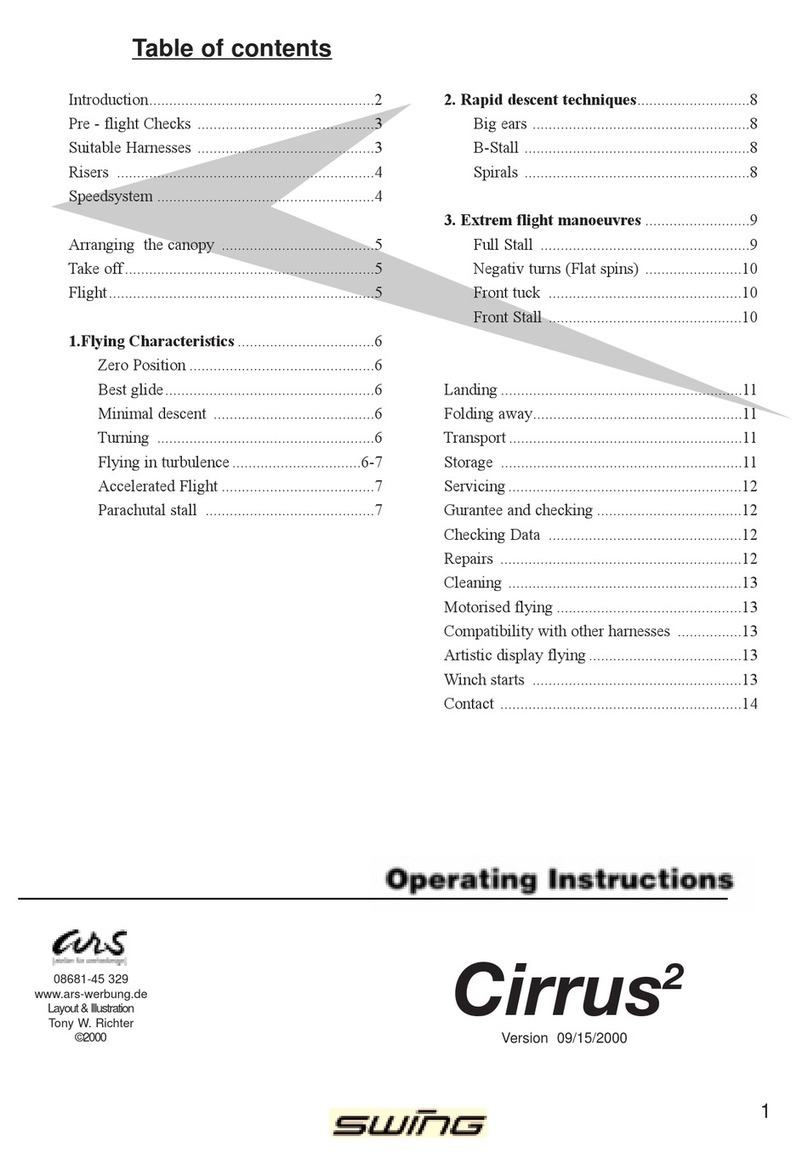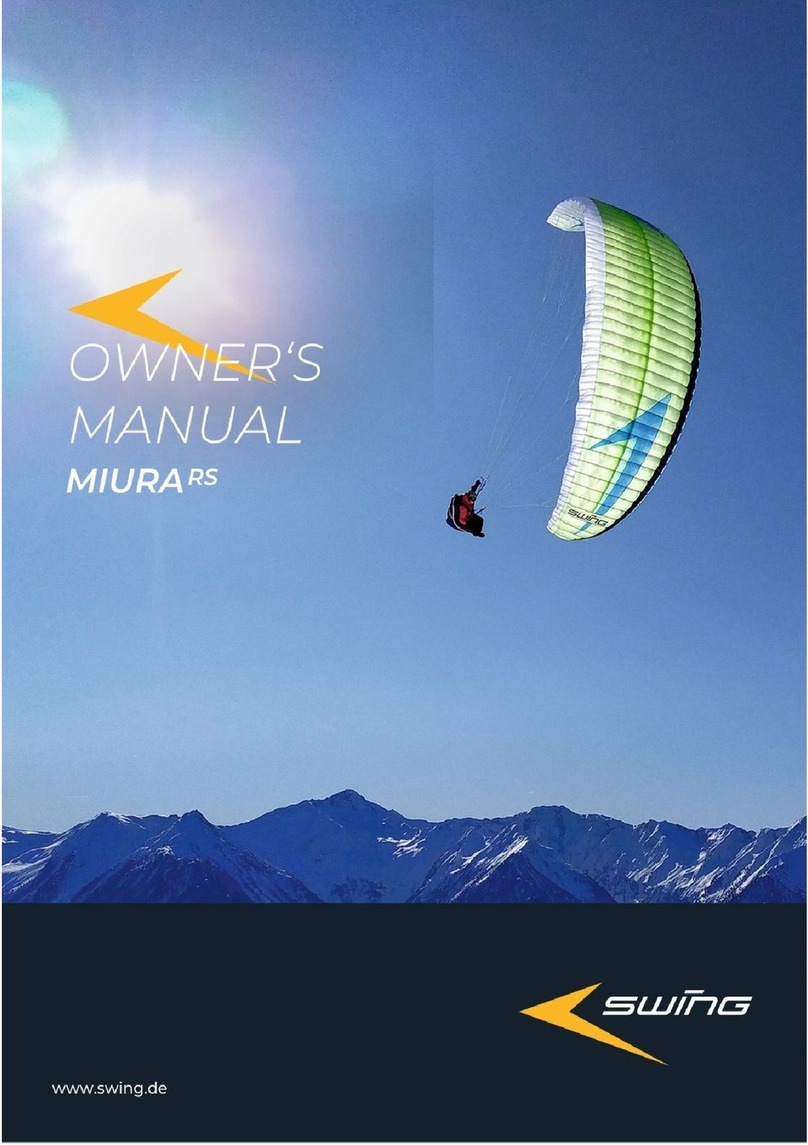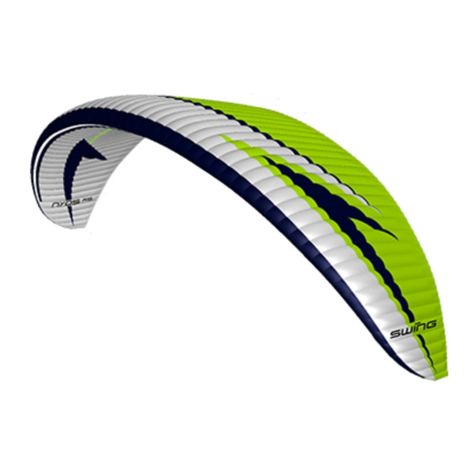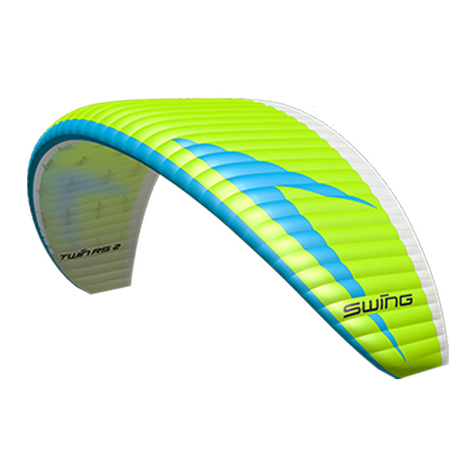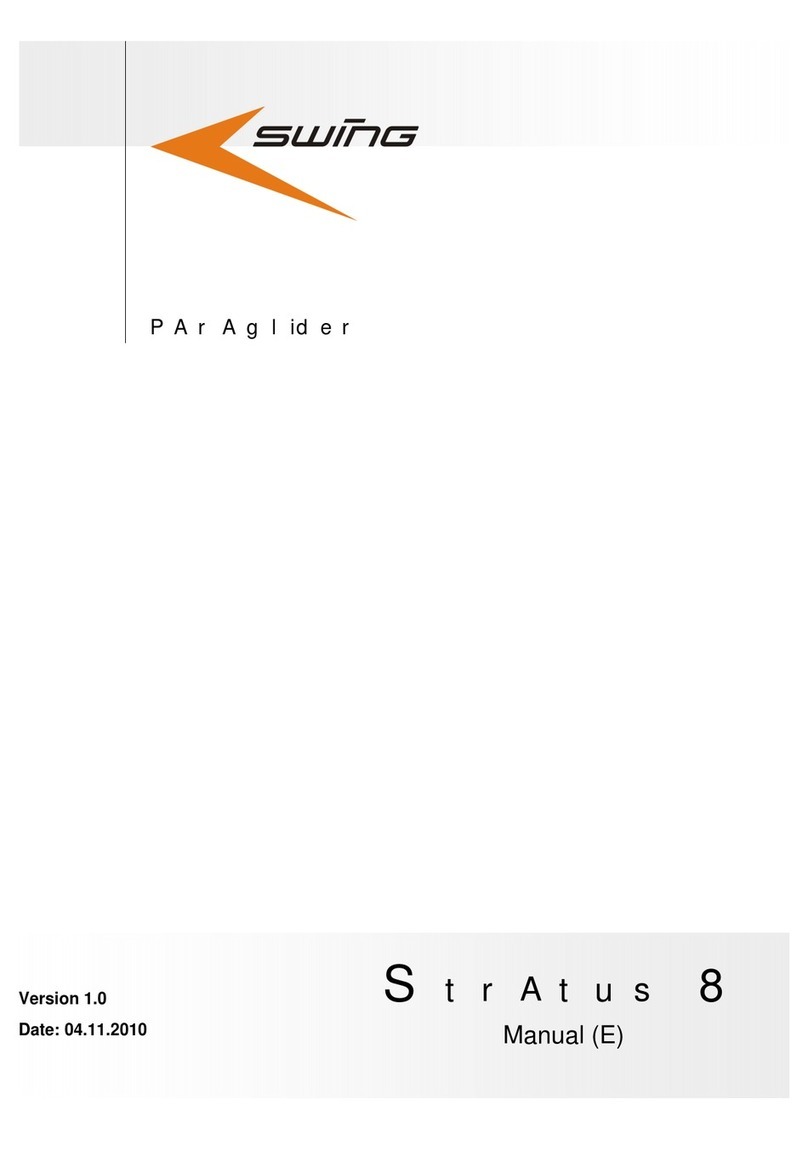This should be matter of course
•In order to fly the aircraft safely, qualified and comprehensive pilot training must
be completed.
•The aircraft should always be flown with a reserve parachute.
•Before each take-off, the aircraft must be checked for faults, the trimmers closed
during take-off and secured by pressing on the buckle.
•Opening the trimmers and thus accelerating the aircraft in turbulent and
thermal air masses can cause the aircraft to collapse dangerously.
•When flying through turbulent and thermal air masses, the glider must be
actively flown by the pilot.
•Flying with asymmetrically opened trimmers must be ruled out, as the glider will
pull into a sharp turn with a lot of altitude loss.
•Do not fly in the rain or with a wet wing profile as this could make the glider
uncontrollable and dangerous.
•Avoid a braked or dynamically flown final approach to land safely with a
controlled landing flair.
About the material
•Before the first flight, the operating instructions must be studied carefully to
familiarise yourself with the functions and operation of the aircraft.
•The aircraft must be checked and inspected every 100 hours or 1 time per year
according to the inspection instructions.
•Worn or damaged trimmer tapes must be replaced, as the engagement in the
set trimmer position can no longer be guaranteed due to possible slipping.
•Visually check the lines, especially trunk and brake lines, regularly for damage
and wear. A broken line can lead to a crash.
•This glider must be checked regularly by a qualified company.
Further information, operating instructions and technical data
can be found at www.swing.de.
To get to the Miniwings and Speedflyers, use the QR code and
this URL:
https://www.swing.de/produkte/#Miniwings

